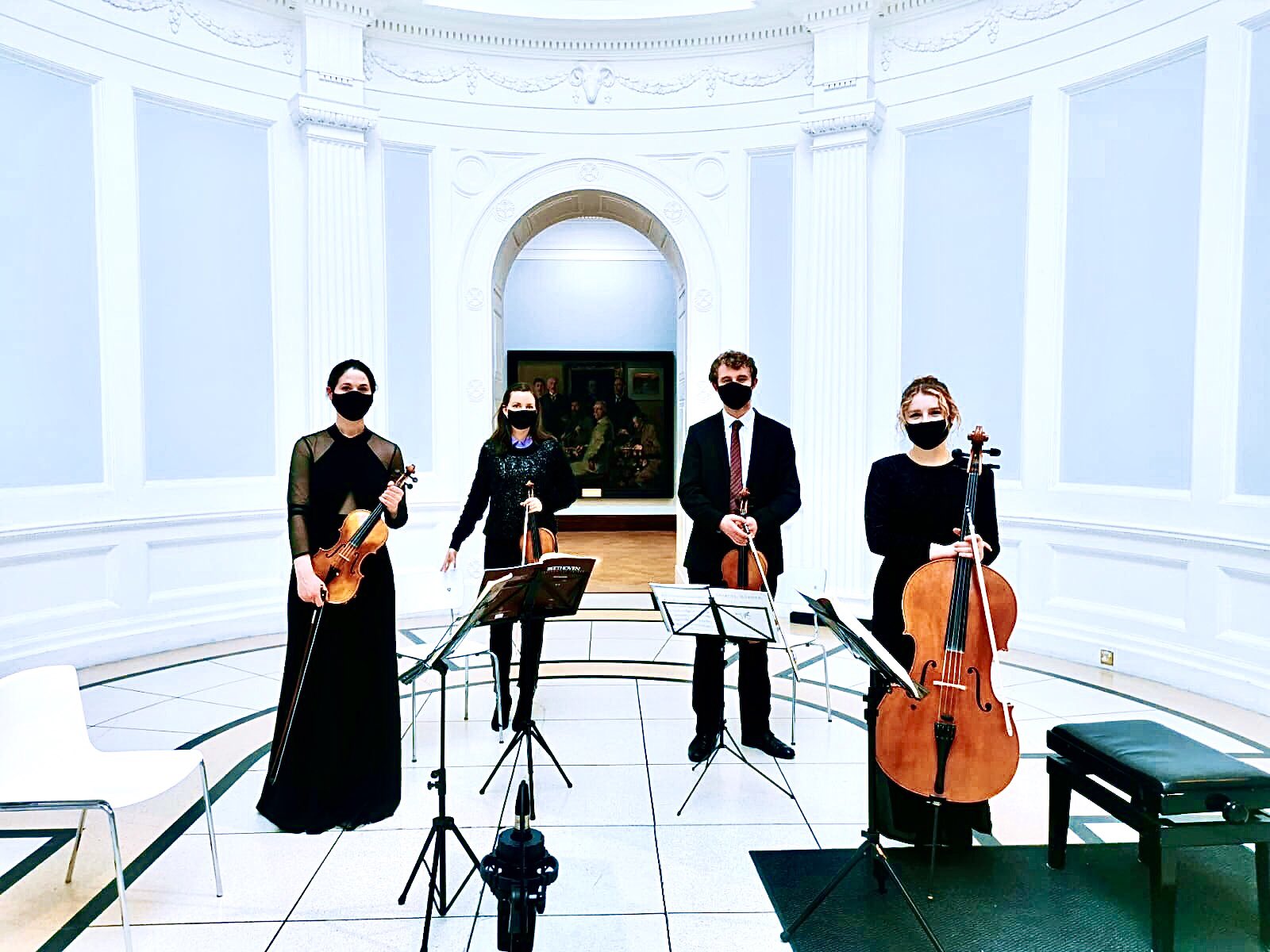The first concert was by William Butt, who is a cellist. I had seen him previously at those greatly missed Santa Rita concerts that the Ergodos lads had put on. He is an impressive performer, with the physicality of his playing being particularly striking if you are able to see him close up. For this concert he was performing two pieces by Bach (Cello Suite no. 1 in G and Cello Suite no 4 in E flat). I don't really have much to say about this but that it was great, the perfect combination of musician and work. But sadly I was a little bit puppy tired and may have nodded off at one or two points.
And the concert can actually be watched on YouTube, should you want to see William Butt in action.
For the second concert I made sure to knock back an espresso beforehand to ensure there would be no embarrassing sleepy moments. This time the performers were the Spero Quartet. They are a string quartet made up of young people, three of whom are women. Like a rock band they were travelling around Ireland playing this show, with the Hugh Lane concert being the final date of the tour, which meant there were some hi-jinks. The programme was an adventurous one, with the initial Mozart Quartet in D major being the most conventional piece on offer, a genuinely beautiful piece that would have been worth the price of admission on its own.

The last piece was Shostakovich's String Quartet no. 9 in E flat major, a late composition of his from 1964. Things were finally going well for the composer at that point. He was finally basking in some sustained official favour and no longer in danger of being sent to the Gulag for making music Stalin deemed tuneless. And also he was now happily married to his third wife, Irina Supinskaya. For all my love of Shostakovich, his string quartets are a bit of a blind spot for me, but it was interesting how there was a bit of an edge to this piece, with it not having the complacent feel one might expect from the work of a composer whose life was now one of relative contentment. The piece contrasts interestingly with the ones from Mozart and Knox: less avant-garde than the latter but edgier than the former, with its composer's characteristic refusal to just serve up beautiful music typifying his 20th century modernist approach.
This concert can also be re-watched on YouTube:
images:
No comments:
Post a Comment